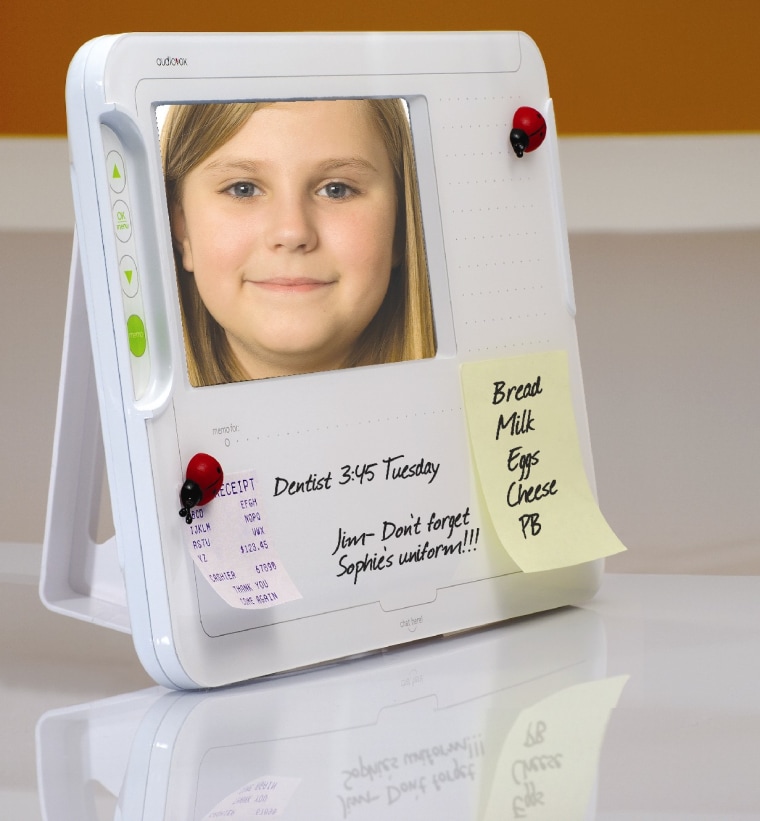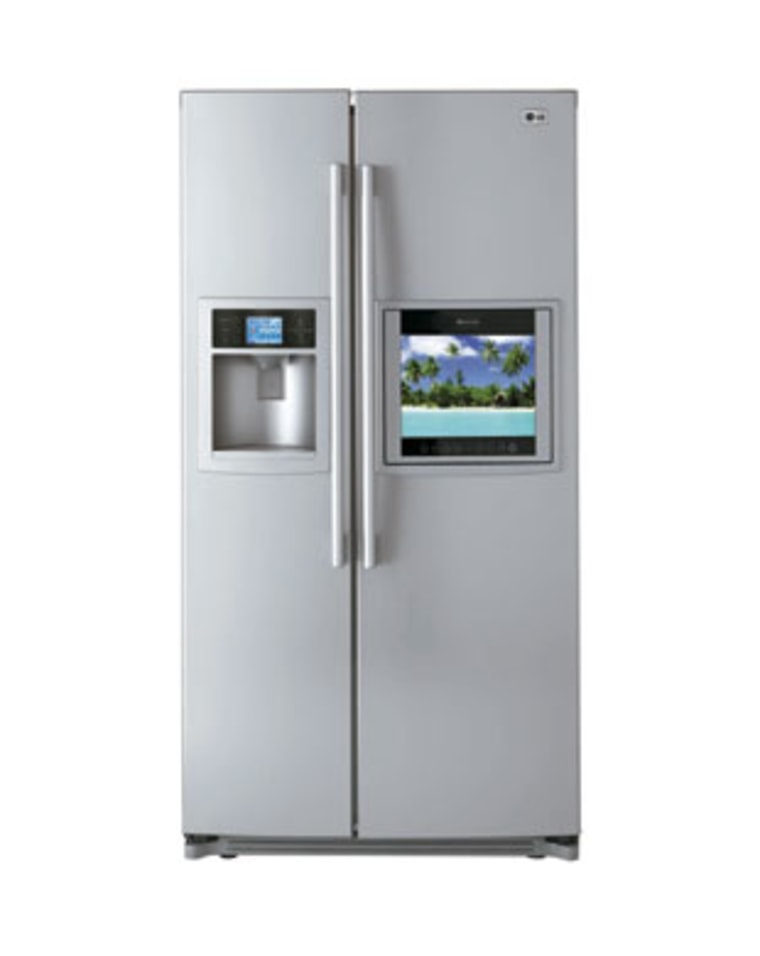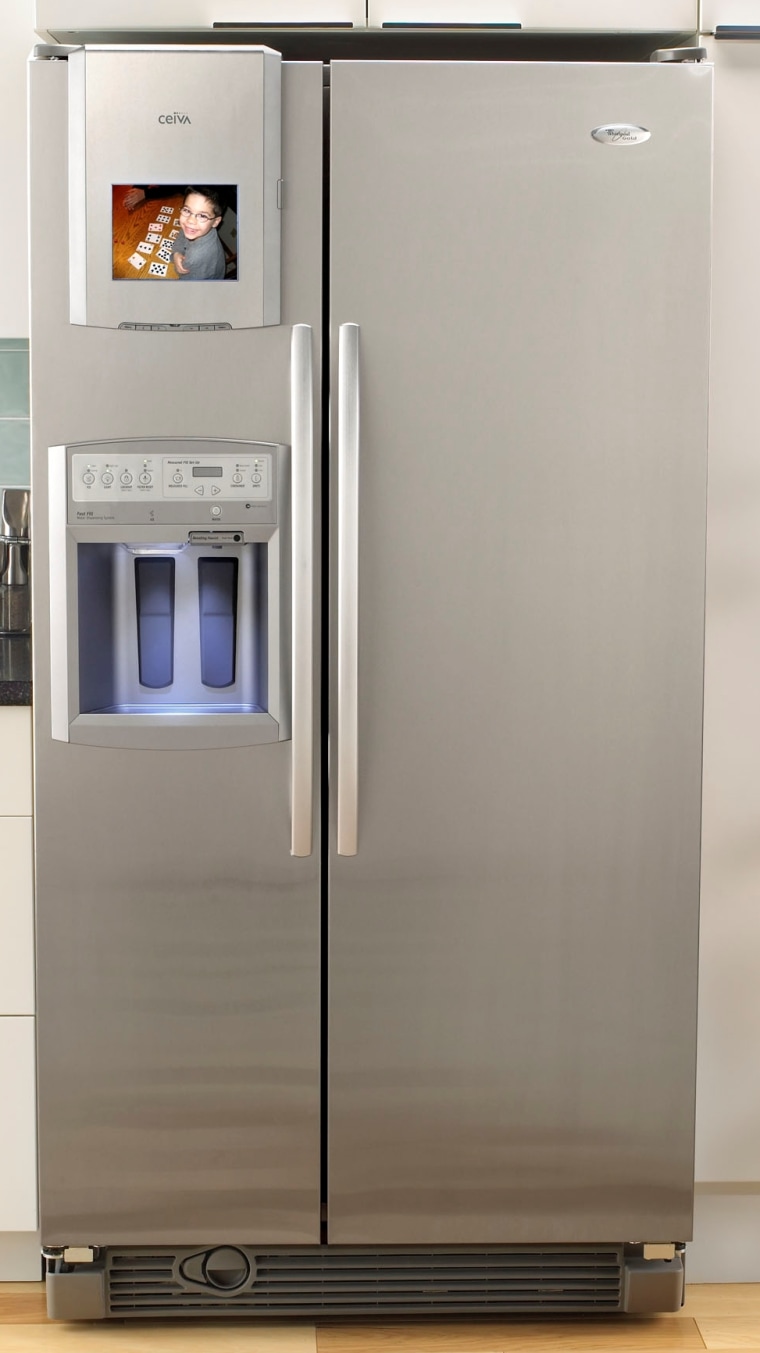Last spring, LG unveiled the “world’s first high-definition TV refrigerator,” with a 15-inch LCD screen built into the refrigerator door, as well as an FM radio and weather station. The unit costs $4,000.
A year later, it’s not really a product the company wants to talk much about, preferring to focus on other new tech-related kitchen efforts, including two built-in wall ovens, each with a 7-inch touchscreen control system.
Marrying the refrigerator door and personal technology has been a challenge for several companies much of the past decade. But newer efforts are combining more practical approaches and Americans’ growing need to deal with clutter in their kitchens.
“We know from our research that many consumers are using their kitchen as the hub of household activity, and they are using their laptops, digital music players and speaker docking stations in the kitchen,” said Tim Herbert, senior director of market research for the Consumer Electronics Association, a trade industry group.
“Consumers are always willing to entertain product options that would enable them to save valuable kitchen space.”
That was part of the motivation Whirlpool said was behind its centralpark connection refrigerator, announced last fall.
The $2,000 appliance has a modular space on the upper-left side of the door that can be used to swap out a digital photo frame, an iPod dock and speaker system, a convertible computing device or a message center. Each item is purchased separately.
De-cluttering the kitchen
“The No. 1 issue we’ve found consumers say is a problem in the kitchen is clutter and not having enough counter space, no matter what size the kitchen, even in larger kitchens,” said Mark Hamilton, Whirlpool’s director for centralpark.
“It’s become an even bigger issue with more devices showing up, such as the laptop or photo frame or music player, in the kitchen. Consumers are really dissatisfied with having to keep those things on the counters. They’re taking up space, there’s lots of wires and there’s also concern about while you’re cooking in there, hurting those devices and messing them up,” he said.
“So those issues led us to say, let’s use the refrigerator in a better way, not necessarily in a new way, but a better way, and bring it into the digital age.”
The centralpark refrigerator has a power connection built into the top edge of the door that is not visible. There’s also a place for the devices to lock into place on the door.
“We know from our research that the average refrigerator is interacted with 55 times a day, so we wanted to make sure if people slam the door, these these devices stay in place,” said Hamilton.
So far, only the 8-inch digital frame — made by Ceiva, at a cost of $199 — is available for the centralpark fridge. It can use memory cards from a camera for showing photos. Users can also sign up for Ceiva’s subscription-based digital photo service, which costs $99 a year.
There’s some wisdom in going with a photo frame first.
Americans like stainless steel refrigerators. But one of the first things many new fridge owners learn is that stainless steel probably won’t accept all those magnets that dotted their old refrigerator doors for years, holding photos and schedules and notes to family members. Most grades of stainless steel used for refrigerators are not magnetic.
In addition, many family photos that might have wound up on the fridge — magnets or not — are not being printed. They’re languishing on home computers, or residing on memory cards.
An add-on option
Audiovox recently came out with its $150 homebase combination message center, including a dry-erase white board, and 7-inch digital photo frame that can be attached to a stainless steel refrigerator using adhesive tape that comes with the unit.
It can also be placed on the countertop as a stand-alone unit, or be put on the wall.
The homebase has an audio feature for recording messages through a built-in microphone. Another homebase model, due out soon, comes with a built-in camera for recording video and audio messages. It will retail for $200.
“The Audiovox product is a pretty good example of a product that really updates the standard message board and brings it into the digital age by allowing members of the households to leave messages to one another,” said Herbert.
“And it’s at a price point that I think most consumers would find pretty attractive.”

In 2000, when Web surfing still was relatively new and all the rage, LG came out with a fridge that had Internet access via a touchscreen on the refrigerator door.
The unit cost around $8,000, and never caught on. It may have been ahead of its time, and in a pre-wireless era, it was more cumbersome to use than today’s products.
“It’s not so much that consumers weren’t ready for the technology, but the technology wasn’t quite ready to deliver some of the features and capabilities that would be both useful, and at a price point that would be attractive,” said Herbert of the Consumer Electronics Association.
More affordable processing power, displays
Current efforts, such as those by LG and Whirlpool, though “are really designed to take advantage of now-more affordable digital displays and processing power,” he said.
Both companies decline to discuss sales numbers of the refrigerators with personal tech on the doors.

LG’s HDTV fridge is still available at "select regional dealers,” said John Weinstock, LG’s vice president of marketing for digital appliances.
The refrigerator also has a DVD connection on the top of the unit. A four-inch screen with a weather and information center is above the ice and water dispenser.
The information center holds 100 pre-loaded recipes from the Culinary Institute of America, and weather forecasts are delivered via a wireless pager network.
“We think it has been a great example for LG to really showcase the brand as something that’s really driving technology in the kitchen,” Weinstock said.
The company’s new wall ovens “take our LCD technology and uses that with a touchscreen LCD,” he said. “That’s just another example of how we’re able to leverage technology across our multiple divisions and bring it into the appliance arena.”
When the Clio Vu computer is made available for the centralpark this year, it will have a wireless connection and can be removed from the fridge for stand-alone use. There’s no word yet on cost.
“In the past, refrigerators with computers had versions with a wired connection, which presents its own challenges,” Hamilton said. “And most people don’t want to be typing while they’re standing up. So, wireless is key.”
And, there are no illusions that the Clio Vu, made by Data Evolution Corp., will take the place of the family computer.
“It will provide the primary functions that people want to do with a computing device in the kitchen — surf the Internet, e-mail, manage a calendar and shopping lists,” Hamilton said, “We’re mindful that you’re probably not going to want to do PowerPoint with it.”
